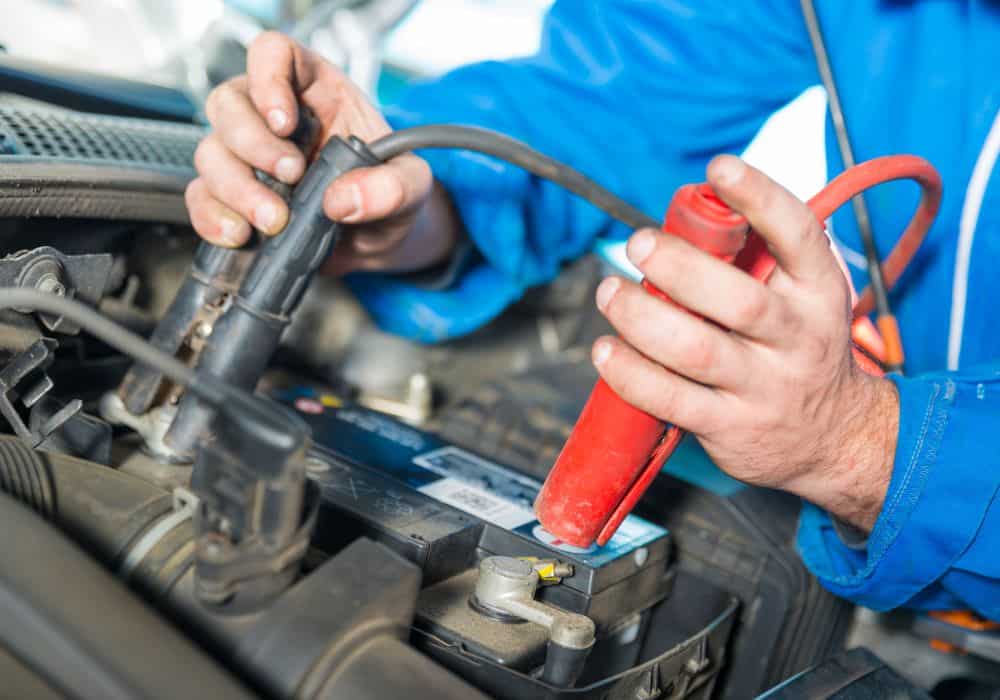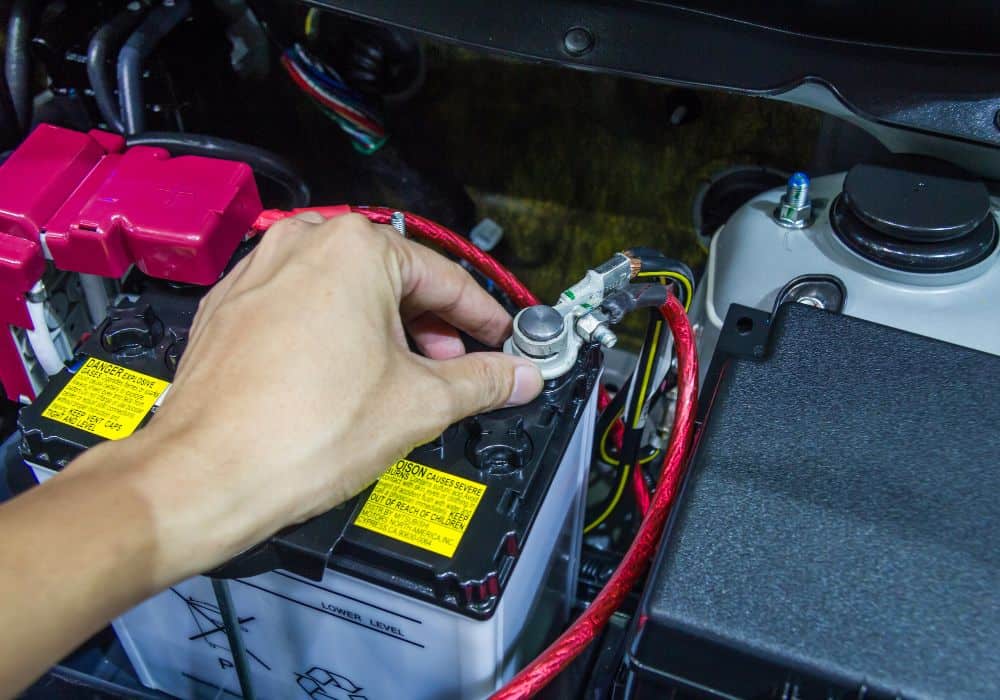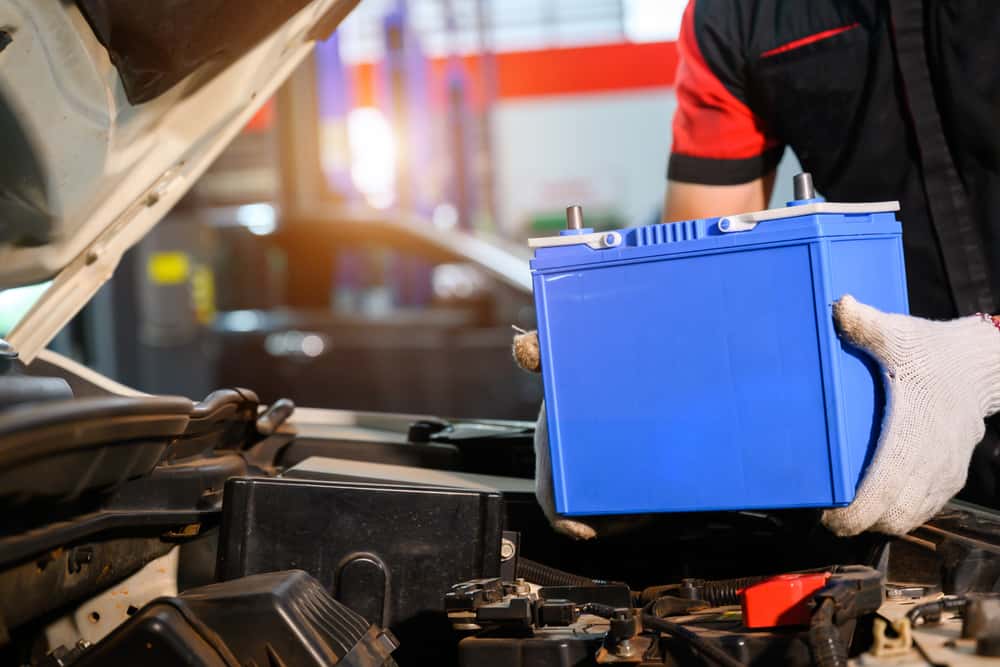A parasitic battery drain can be surprising, confusing, and annoying. Despite turning the ignition off, the battery continues to draw away without you knowing. When you try to start your car – it’s dead.
There are many potential causes of a parasitic battery, including electrical faults, a bad alternator, and even extreme weather. But while the causes may differ, everyone experiences one thing equally – the cost of fixing it.
In this article, we’ll explain everything you need to know about the price you’ll pay because of a troublesome parasitic battery. We’ll also run through common causes of parasitic batteries, ways you can prevent it from happening again, and help you every step of the way in fixing your predicament.
Table of Contents
What exactly is a parasitic battery drain?
The truth is in the name – a parasitic battery is one that continually drains power, causing unnecessary pain. The more you charge it, the quicker it drains. It’s an incredibly frustrating problem to face.
The more you try to help your battery, the worse its overall condition is. The cause of the problem can equally be frustrating to find. It can be any number of factors, including faulty relays, a headlight switch, issues with the alternator, or electrical wiring problems.
Sadly, we often must go to a professional car mechanic for a formal diagnosis of what’s going wrong. This adds considerable repair fees to the situation.
How much does fixing a parasitic battery cost?

Unfortunately, there is no one answer to this question. That is because fixing a parasitic battery relies on solving the root cause of the fault – sometimes, the battery itself is not at fault.
For example, if you need to replace the battery outright, this can cost anywhere from $60 to $300. Factors that increase this price include the type of battery required, the size and power needed by your car, and an installation fee from a professional.
But if something else is causing your battery to fail, you might incur additional costs. Unfortunately, you may need to replace one or more of the following at the same time to prevent a parasitic battery draining from reoccurring:
| Part to replace: | Average cost |
| Replace battery cables | $125 to $400 |
| Replace alternator | $290 to $680 |
| Replace fuse | $110 to $140 |
| Replace starter | $290 to $995 |
Symptoms of a poor battery
Diagnosing that you have a parasitic battery is half the battle in finding a solution. This can help limit the cost as you can hone in on the fault. Additionally, you might be able to then fix the problem on your own without needing a proper assessment from a professional mechanic.
So how can you spot an underperforming battery? Consider the following:
- The battery charge appears to charge to 100% – but quickly drops.
- When you open the hood, inspect the battery. Signs of physical damage, corrosion, bulging, and leakage suggest parasitic drainage.
- The battery cannot hold any charge for long before dying out.
- If the voltage detected at terminals is too low to what your manufacturer’s manual says it should be, this indicates a failing energy supply.
How to officially identify a parasitic battery?
- Unplug all devices: Turn off everything, including all electrical components. Turn off the radio, heat, and windshield wipers. Remove the car keys and close all compartments, including doors and the trunk, to ensure no circuits are live.
- Charge the car battery: To properly detect a drain, you need to charge the car battery to its fullest potential with a battery charger.
- Remove the negative battery cable: While you can test the battery using either positive or negative wires, it is much safer to ground the negative one. Use a wrench or socket to remove the negative cable from the battery.
- Multimeter: Set your multimeter to above 15 volts. Connect the red lead to the positive terminal and the black to the negative one. Check the reading. For an accurate reading, you can use plastic clamps to secure leads in one place.
- Results: Results should be around 12 volts for a healthy battery. A positive reading proves there’s current flowing. That said, your battery may still be weak and hold a charge even if the reading is high.
- Turn the car back on: Turn the car back on with the multimeter attached. Record the changes in the meter reading. The voltage should not drop. If it does, you have a battery problem.
Causes of parasitic battery drains

There are a variety of causes for a battery becoming parasitic. Sometimes it might be a combination of two or more. The most common include:
- Car lights: Leaving car lights on, especially overnight, can drastically reduce battery power levels. Older cars, in particular, have no mechanisms to switch off lights when not in use.
- Alternator: the alternator helps convert an alternating current (AC) into electrical energy or a direct current (DC). With six alternator diodes, you may need to replace one or all of them to rectify your parasitic drain.
- Short, repeated drives: Turning the car on takes energy and even more time for the alternator to set up and replenish the battery. If you only take the vehicle a short distance, you’re preventing power from being restored. Repeated short drives lead to reduced battery capacity.
- Temperatures: Extreme changes can affect battery performance. These changes can speed up chemical reactions inside the battery, increasing corrosion and leading to irreparable damage.
- Corrosion: connections between the battery and other systems can lead to the battery running dry when driving or being under-supported. Corrosion may have worn wires and parts, weakening your overall system’s performance.
- Maintenance: Follow the instructions from the car manufacturer on how often you should maintain and repair the battery. On average, car batteries should last between three to four years.
- Dirt: A build-up of dirt or debris on the top of the battery may conduct the current and lead to the battery discharging itself. Simply cleaning it off can help restore its power – but avoid harsh chemicals that can actually damage the structural integrity of your car’s internal circuits.
- Electrical system: Sometimes, a fuse blown under the hood, a faulty computer module, or damaged accessories can weaken your car’s circuits. For example, if your radio turns on unexpectedly or the glove box light remains on despite the car being turned off. Other systems, like security alarms or clocks, are designed to stay on without causing undue battery stress.
Expert Tips

- A car battery should last, on average, four years. After this, natural degradation is unavoidable.
- The average cost of repairing or fixing a parasitic battery relies on how many contributing factors are causing it. Sometimes, it can cost something small, like $60; other times, it can range into hundreds of dollars.
- Ensure battery terminals are clean before testing your battery, as debris may impact readings and mislead your diagnosis.
- Any electrical devices that are plugged directly into your car, such as a radio, phone charger, or lights, can be the source of the parasitic draw. Disconnect them and test them separately to eliminate them as a root cause.
- As well as a fault in your electrics, battery problems may stem from corrosion. Check the battery for signs of deterioration, including nearby wires, fixtures, and connections.
- Always check your car warranty before committing to fixing your battery. Some or all of its parts may qualify for free replacement if certain conditions have been met.
Conclusion
A parasitic battery is an unfortunate thing to happen to your vehicle. Not only does it cost you time to fix it, but as we’ve shown, it can cause high costs, too.
No matter how much you try to help, you may, in fact, be making your battery worse. By feeding it power and being unable to hold onto it, it may reduce its capacity even more. Eventually, you can expect complete battery failure and an inability to turn it on.
As with any vehicle problem, detecting and diagnosing the root cause is just as crucial as repairing it, as you can prevent this problem from developing again and again.
Our article showcased the average costs you will face in fixing your parasitic battery drain problem. But if you have questions about the price of repairing a parasitic battery, please leave a comment below.
But always remember:
- A parasitic battery can stem from several causes, including electrical faults and damaged headlights, alternators, and wires.
- A digital multimeter can help diagnose energy problems when connected to the battery.
- Car batteries have a life expectancy of three to four years. You will need to replace your battery, regardless of how well you maintain it.
